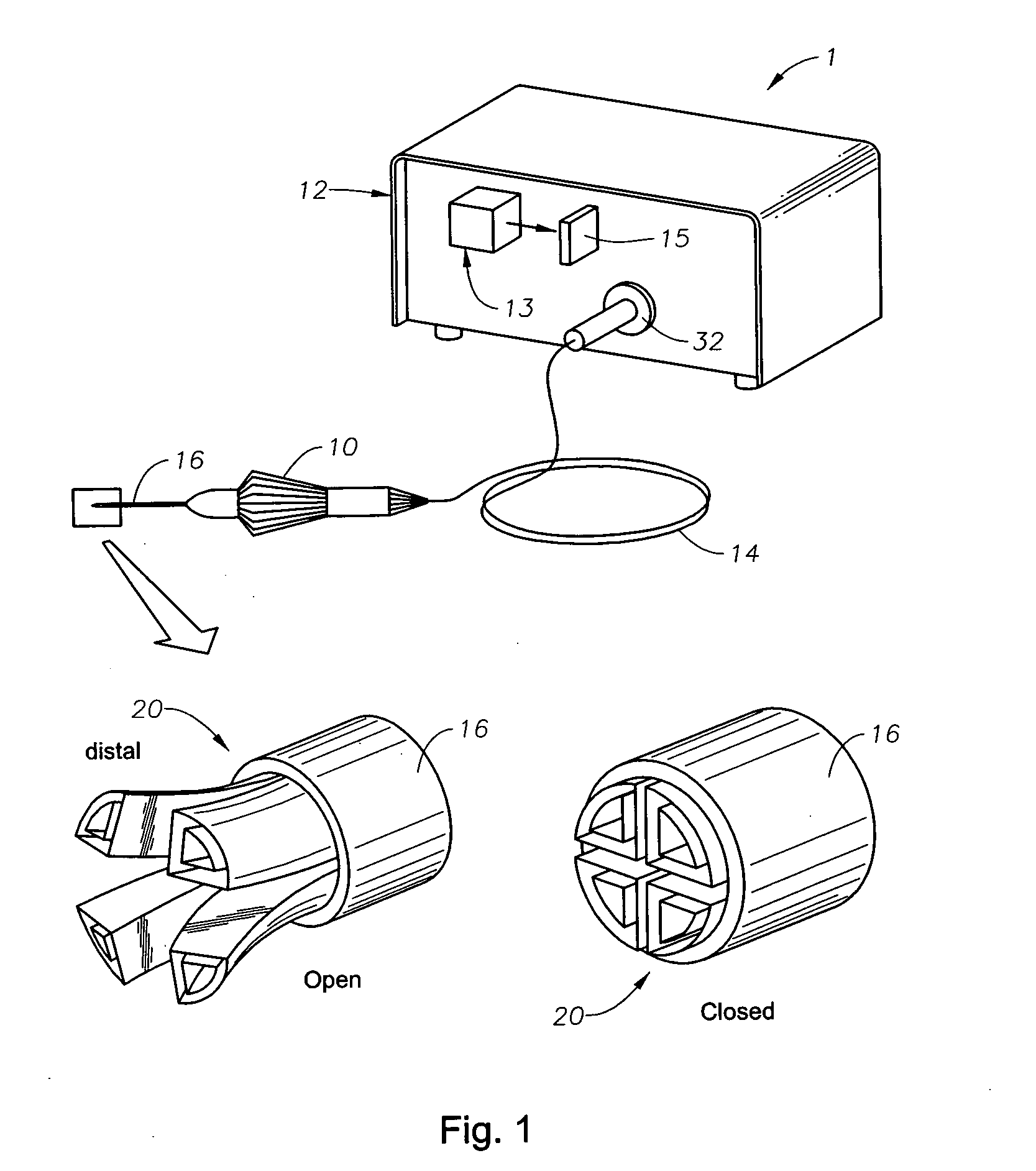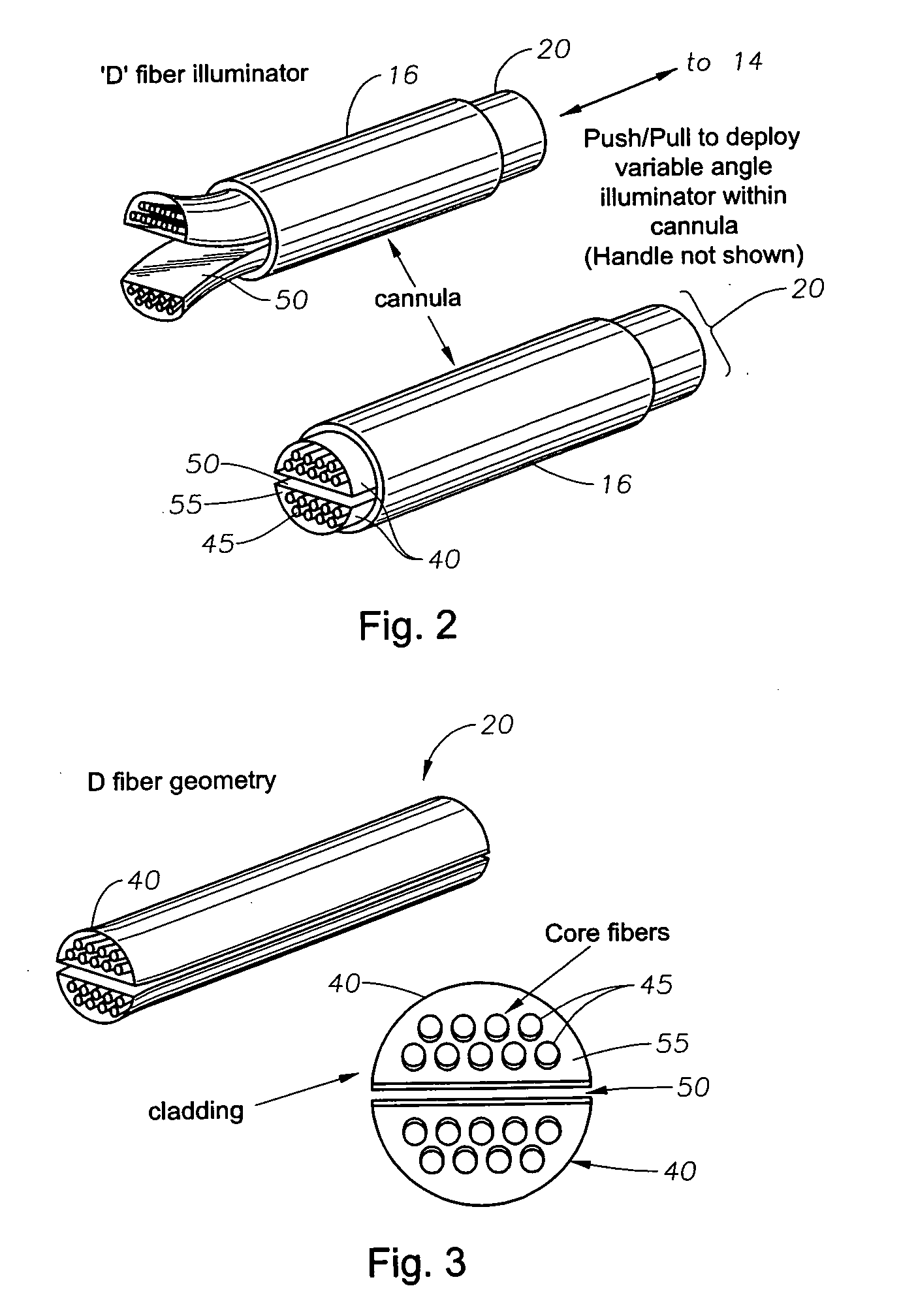Multi-fiber variable intensity wide-angle illuminator
a wide-angle illuminator and variable intensity technology, applied in the field of surgical instruments, can solve the problems of sub-optimal light refraction, wide-angle illuminators for ophthalmic surgery, and matching the light refracting index of vitreous eye fluid, and achieve the effect of reducing the damaging thermal effects of infrared radiation
- Summary
- Abstract
- Description
- Claims
- Application Information
AI Technical Summary
Benefits of technology
Problems solved by technology
Method used
Image
Examples
Embodiment Construction
[0022] Preferred embodiments of the present invention are illustrated in the FIGURES like numerals being used to refer to like and corresponding parts of the various drawings.
[0023] The various embodiments of the present invention provide for a small gauge (e.g., 19, 20, or 25 gauge) optical fiber based endo-illuminator device for use in surgical procedures, such as in vitreo-retinal / posterior segment surgery. Embodiments of this invention can comprise a handpiece, such as the Alcon-Grieshaber Revolution—DSP™ handpiece sold by Alcon Laboratories, Inc., Fort Worth, Tex., connected to a small gauge cannula (e.g., 19, 20, or 25 gauge). The inner dimension of the cannula can be used to house an optical fiber assembly comprising a plurality of fiber guides and a means for separating the plurality of fiber guides, such as a separator, in accordance with the teachings of this invention. Embodiments of the multi-fiber wide-angle illuminator can be configured for use in the general field of...
PUM
| Property | Measurement | Unit |
|---|---|---|
| illumination angles | aaaaa | aaaaa |
| illumination angles | aaaaa | aaaaa |
| acceptance angle | aaaaa | aaaaa |
Abstract
Description
Claims
Application Information
 Login to View More
Login to View More - R&D
- Intellectual Property
- Life Sciences
- Materials
- Tech Scout
- Unparalleled Data Quality
- Higher Quality Content
- 60% Fewer Hallucinations
Browse by: Latest US Patents, China's latest patents, Technical Efficacy Thesaurus, Application Domain, Technology Topic, Popular Technical Reports.
© 2025 PatSnap. All rights reserved.Legal|Privacy policy|Modern Slavery Act Transparency Statement|Sitemap|About US| Contact US: help@patsnap.com



